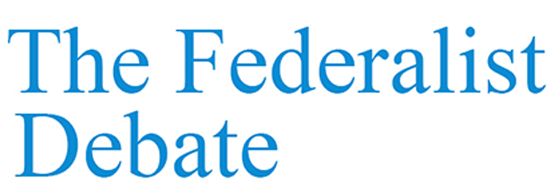Under Draghi’s Lead, Italy Takes Europe Another Step Away from Populism
Mario Calvo Platero
Columnist for la Repubblica, Guarantor for the Italian edition of the New York Times, President Gruppo Esponenti Italiani New York, Chairman Palazzo Strozzi Foundation USA
In assessing the new Italian government led by former European Central Bank President Mario Draghi, many analysts miss an essential point. The focus, of course, should be Italy – its issues and the crisis Draghi will face, starting with the pandemic. But the chances are high that his leadership will have an impact well beyond Italy, dramatically changing politics and economics across Europe.
It’s still early to say, of course, but the stars have aligned domestically in Italy and at the European Union level to make such a wider change possible. Yet, strangely enough, some international media ignore the wider impact that a global personality like Draghi may have.
The kindest commentator was The Economist, which compared Italy to South American democracies, with a difference: in the latter, when the going gets rough, the usual solution is a military coup. But Italy routinely reverts to a “technical government” led by prominent non-elected officials – Lamberto Dini, Carlo Azeglio Ciampi and Mario Monti, who all assumed office in equally troublesome times. The Economist was funny without being insulting. The Wall Street Journal’s opinion page, in contrast, was insulting without being funny, writing about Draghi: “Only patriotism can explain why he’s volunteering for such a thankless and futile job”.
The premise of that editorial was wrong. It assumed Draghi was called to lead the country to avoid elections and to postpone the inevitable victory of the populist right. The fact is that, after having been part of government coalitions, Italy’s two main populist parties are imploding.
It is not by chance that both the Northern League and the Five Star Movement enthusiastically support the Draghi government. On the right, Matteo Salvini's Trumpian populist leadership of the Northern League has been under siege by centrists in the party like Luca Zaia, the powerful governor of Veneto, the richest regional district in Europe by industrial production and per capita income. Recently Zaia won reelection with a 76.8 percent majority for a simple reason: besides having managed COVID-19 well, he was adamant in recognizing the importance of the euro and the EU for Italy’s national and economic interests and for his local industrial constituencies.
On the populist left, the Five Star Movement also stuck with Draghi. Beppe Grillo, the comedian who founded the movement, understood that his party would lose badly in any election without a dramatic change in its position. He needed time and concluded that the leadership of Giuseppe Conte, the departed centrist prime minister close to the movement but not officially in it, will be an asset for the party’s future. To be sure, the Five Star’s radical wing has already split.
The same is true for the Democratic Party, now in complete turmoil: Nicola Zingaretti has resigned from the party leadership, and former Prime Minister Matteo Renzi, the architect of the recent power struggle that brought Draghi in, may stage some sort of comeback in the party.
The thinking of all these parties is that being part of a winning government, in terms of fighting COVID-19 and relaunching the economy, will help galvanize their respective bases and allow them to regroup before the 2023 elections.
Italy was the first industrial democracy to witness a thriving populist party about 25 years ago; the Northern League moved from a fringe underdog populist party to the leading party of the right, placing Silvio Berlusconi on the defensive.
But as we have seen, the centrist impact of Draghi’s leadership on Italian politics has already occurred – away from the traditional populist themes of the Northern League and the Five Stars. So, is this a first national shift which will be mirrored across Europe?
If the Draghi government succeeds, there is a good possibility that public opinion in other populist-led countries, like Hungary or Poland, will start looking to their centers, too. And Draghi’s potential for success is high – not just because of his stature as the former European Central Bank president who already saved the Euro and Europe once, but because the chances are strong for a return to a good growth rate once COVID-19 is tamed.
Some observers point out that Draghi has a huge parliamentary majority, but one that is smaller than that of one of his predecessors, Mario Monti, – and, in the end, Monti failed miserably to produce an expected turnaround. But Monti’s situation was dramatically different, dominated by Germany’s austerity obsession. After the 2007-2009 crisis, it took Germany until 2012 to consider easing European monetary policy to support growth against the risk of inflation. And it was Draghi, then running the ECB, who did it.
Today, in contrast, even Germany understands that monetary easing is essential and that, after COVID-19, an expansionary fiscal policy is also key to recovery.
Draghi’s challenge will be to get, as quickly as possible, the 209 billion euros ($247.8 billion) allocated to Italy by the EU to ignite a strong recovery. He will be investing, not belt-tightening, which is what killed Monti’s leadership. And the EU faces a leadership vacuum: Germany’s Angela Merkel, Europe’s only political giant, retires in September; France’s Emmanuel Macron faces a domestic crisis of confidence and Britain is now out of the EU. Within a few months, Draghi may be ready to fill Merkel’s shoes and provide a model for other disappointed countries and for the EU itself.
The second impact of Draghi’s prime ministership will be at the EU level. During his acceptance speech in Italy’s Senate, he declared: “Supporting my government means agreeing on the irreversibility of the euro and share the perspective of a more and more integrated European Union, which will lead to a common public budget capable of supporting member countries during recessionary periods.” He was talking about the second step towards a European Fiscal Union; the first step was taken when the EU launched a recovery fund to help its members fight COVID’s health, social and economic tragedies. In a historical first, 750 billion euros (about $900 billion) were set aside to help.
One thing is certain: Draghi will have both the authority and the credibility to shake up certain EU rigidities. He picked up the phone firmly complaining with EU Commission President Ursula von der Leyen for the unacceptable delays in vaccine delivery to individual countries. And in the next year he will move forward towards the key objective of fiscal unification. The foundations were set at the G-20 gathering in 2012. Now, things are happening and Europe will grow stronger.
Italy’s former Treasury Minister, Domenico Siniscalco, a friend who is Morgan Stanley’s vice chairman for Europe, recently told me that a new European decade is opening in front of us. Very possible. After all, we know that tragedies like COVID-19 bring a dramatic acceleration on the path of history.

